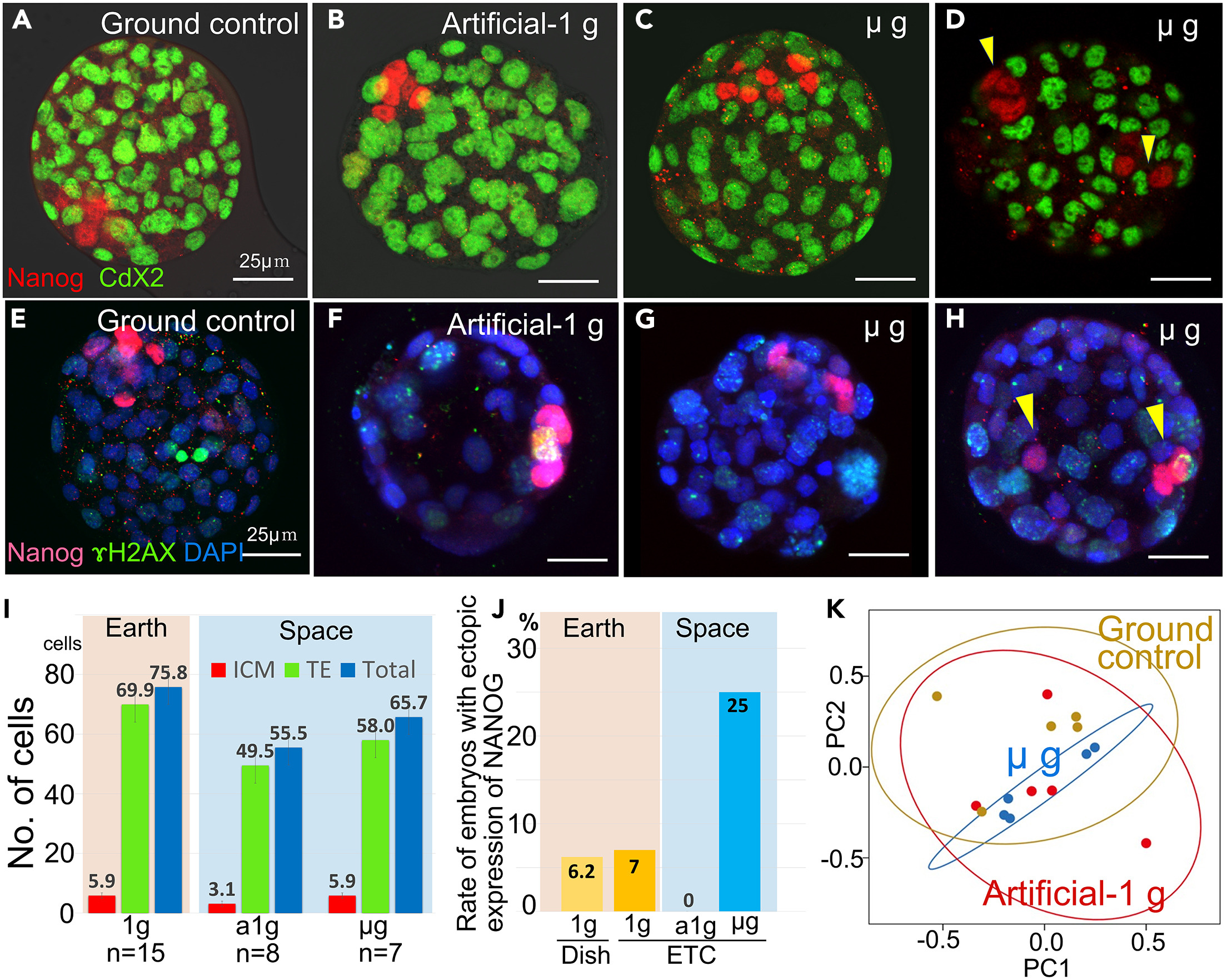Can humans reproduce in space? Mouse breakthrough on ISS a promising sign
This is the first-ever study that shows mammals may be able to thrive in space.

Researchers have successfully grown mouse embryos aboard the International Space Station (ISS) for the first time.
This represents "the first-ever study that shows mammals may be able to thrive in space," the University of Yamanashi and National Research Institute Riken said in a joint statement on Saturday, adding that it is "the world's first experiment that cultured early-stage mammalian embryos under complete microgravity of ISS."
In other words, this new mouse embryo study is a big deal because it suggests humans can reproduce in space someday — once the first human baby is born off the surface of our planet, we would become a true space-faring species.
The landmark results come as humanity prepares to return to the moon in conjunction with the Artemis program, which also aims to land the first woman and first person of color on the lunar surface by 2025. Even though this mission, Artemis 3, will only see lunar occupation at the moon's south pole last around a week, it will likely lead to the establishment of lunar camps. Those camps could ultimately pave the way for humans to stay in space much longer in the future, when the sci-fi vision of off-world reproduction may turn into reality.
Related: How long could you survive in space without a spacesuit?
The experiment to grow the first mammalian embryos in space was led by Teruhiko Wakayama, a molecular biologist at the University of Yamanashi's Advanced Biotechnology Center, and a team from the Japan Aerospace Space Agency (JAXA). The aim of the study was to determine whether a mammalian fetus can develop normally in the limited gravity, or "microgravity," environment of space.
To find the answer, frozen mouse embryos were blasted to the ISS aboard a SpaceX Falcon 9 rocket in August 2021. After arriving at the space station, the early-stage rodent embryos were thawed using a special instrument. Following this, astronauts cultured the embryos under microgravity for four days. The samples were then returned to Earth, where Wakayama and colleagues could study and compare them to mouse embryos grown in normal gravity here on terra firma.
Breaking space news, the latest updates on rocket launches, skywatching events and more!
And sure enough, according to a paper published in the journal iScience, the team reported that embryos cultured under microgravity conditions developed into blastocysts — a cluster of dividing cells made by a fertilized egg — with normal cell numbers. The researchers said in the paper that this "clearly demonstrated that gravity had no significant effect on the blastocyst formation and initial differentiation of mammalian embryos."
The team also found that, if allowed, the blastocysts would grow into mouse fetuses and placentas while showing no significant DNA alterations or changes in gene expression. The survival rate of the embryos grown on the ISS was lower, however, than those cultivated here on Earth.
"In the future, it will be necessary to transplant the blastocysts that were cultured in ISS’s microgravity into mice to see if mice can give birth," the team added in the paper, though saying this was a vital step toward confirming that blastocysts grown in microgravity are indeed "normal."
One aspect of the research the team will need to investigate further is the effect of radiation on space-based mammalian embryo growth. Though the researchers did look at this somewhat, they did not consider radiation exposure during the phases of live embryo cryopreservation and culturing specifically.
All this knowledge may eventually become very important to humans when we finally begin to think about sending people to the moon and Mars for long stays or even permanent habitation.

Robert Lea is a science journalist in the U.K. whose articles have been published in Physics World, New Scientist, Astronomy Magazine, All About Space, Newsweek and ZME Science. He also writes about science communication for Elsevier and the European Journal of Physics. Rob holds a bachelor of science degree in physics and astronomy from the U.K.’s Open University. Follow him on Twitter @sciencef1rst.

